Sous vide lobster tail in a dreamy melted butter sauce couldn't be easier to make, and it's incredibly tender and flavorful. Don't miss this special recipe.
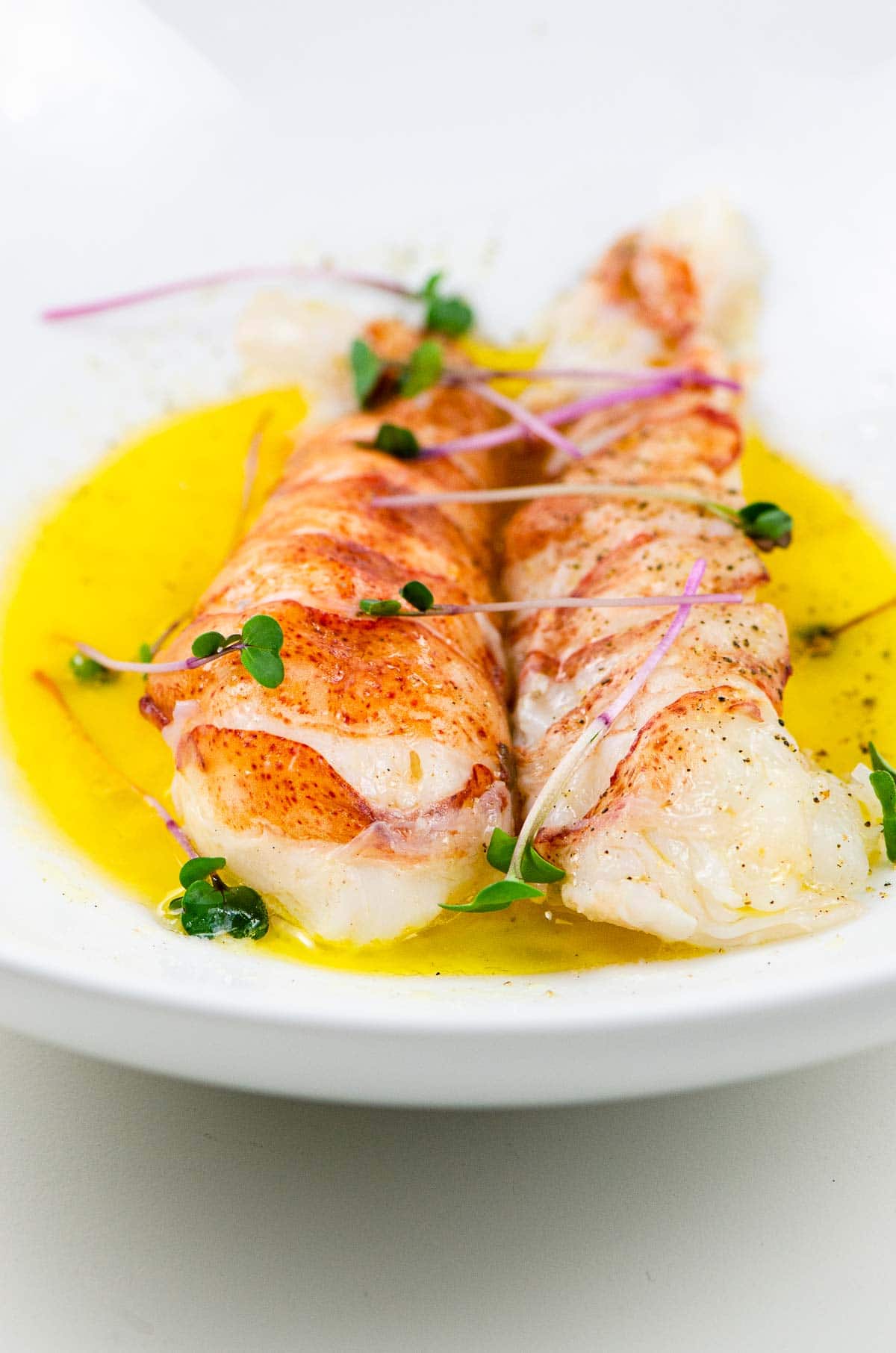
Why we love this recipe
Truth be told, my absolute favorite way to eat lobster is to really get busy with it. If you don't need a bib, I've got questions. That said, there are plenty of instances when you're looking for something a little more refined. So I'll say this: sous vide lobster tail is one of my very favorite ways to eat lobster that doesn't require a shower afterward. This recipe yields:
- Mind-blowingly tender tails
- With so little hands-on work that it's almost hard to comprehend
- And minimal cleanup
- Extremely consistent results with plenty of wiggle room
Plus, it's very flexible. I've provided the basic formula, which is beautiful just the way it is. Or you can infuse the butter with herbs and other seasonings of your choice.
What you'll need
Here's a glance at the (hilariously short) list of ingredients you'll need to make this recipe. With so few inputs, quality makes a big difference, so follow the tips below to the extent possible. And refer to the "Additional flavors" section for suggestions, though additions are truly not necessary.
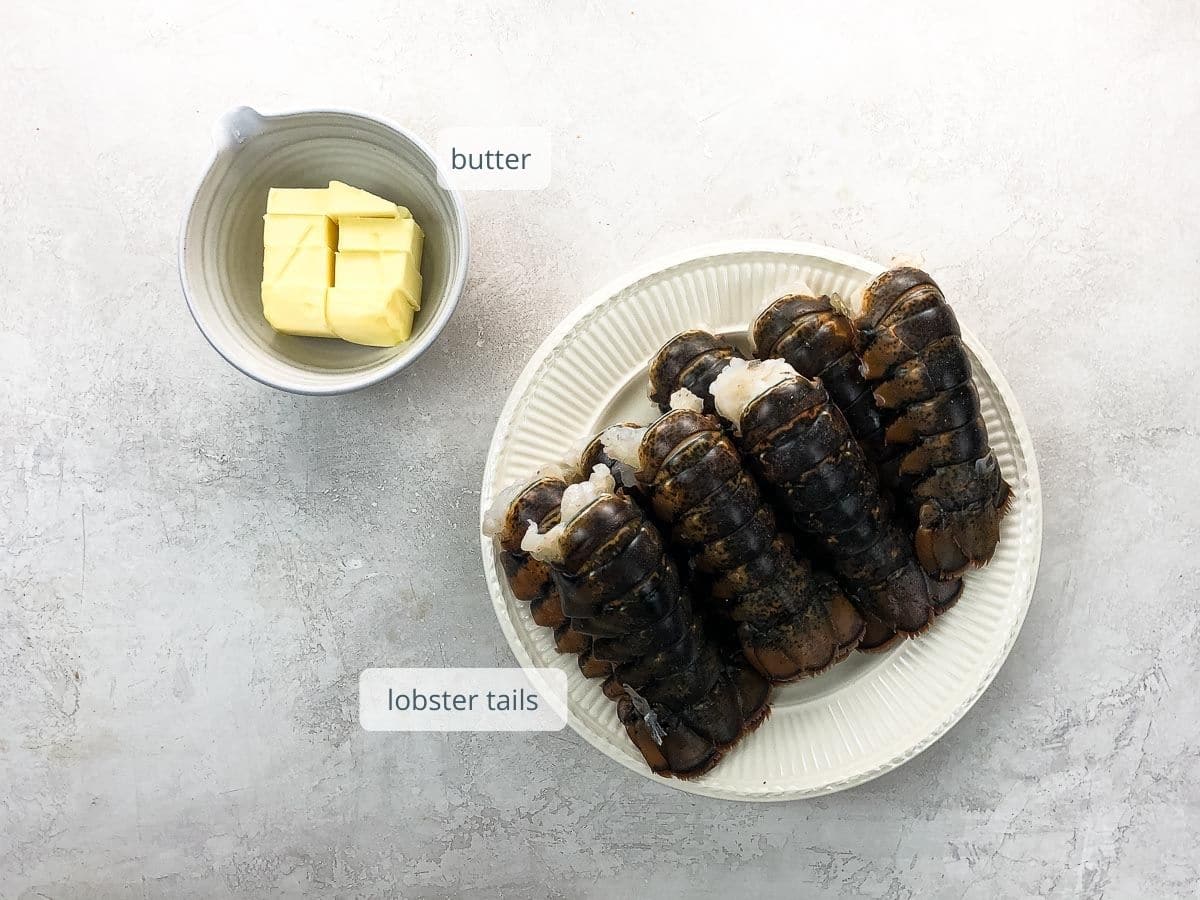
- Buy cold water lobster tails. You can use smaller or larger tails for this recipe, whatever you prefer. I like to use smaller ones and serve two per person. The tails in the photo and video here are only about 4 ounces each. See the section below for more information on sourcing.
- If possible, use a good cultured, salted butter from grass-fed cows. It sounds fancy but doesn't have to be — Kerrygold is my go-to brand at the supermarket and isn't overly expensive.
How to make it
Here's what you'll do to make this recipe. It's way easier than you may think. You can see the steps in action in the video that accompanies this post, and get all the details in the recipe card below.
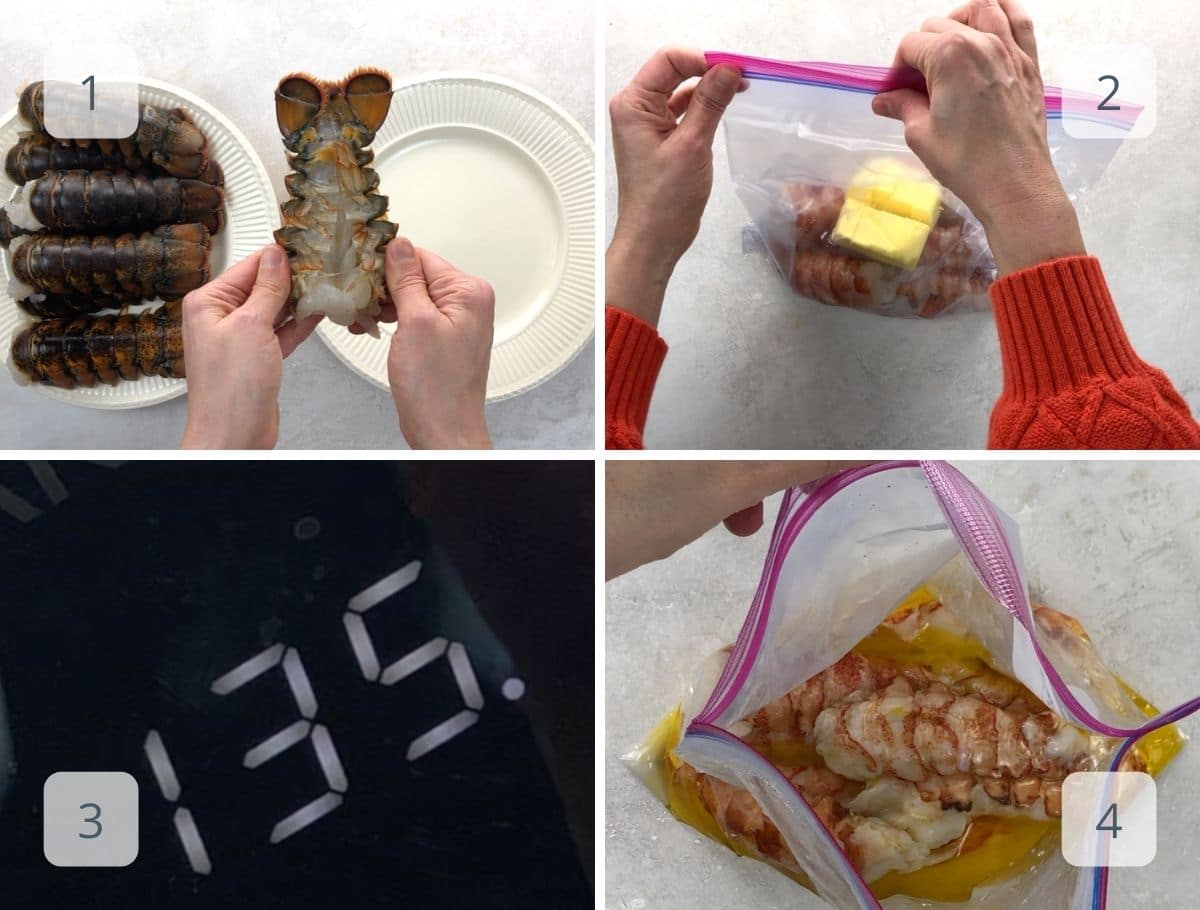
- First you'll remove the tails from their shells. The easiest way to do this is to use kitchen shears to cut all the way down the underside of the shell and then pry the shell open like a book. After that, you'll be able to remove the meat in one piece by gently but firmly prying it out of the open shell with your thumb.
- Other than a sous-vide cooker (not strictly necessary, but super helpful), you don't need any fancy equipment to cook this or any other sous-vide recipe. Some people use specialty bags and vacuum sealers, but they're totally optional. Place the tails and butter into a gallon-size zip-top bag and partially seal it.
- Fill a deep pot or food storage container halfway with water. Submerge the partially sealed bag into the water bath so that all ingredients are covered with water but no water gets into the bag. Now you'll perform the water displacement method of sealing the bag. This is a simple, equipment-free alternative to vacuum sealing that works brilliantly. Use one hand to help squeeze air out of the bag (the water itself does the heavy lifting here, but you'll help it out) and the other hand to finish sealing the bag's zip top. Remove bag from water and set aside. Clamp your sous-vide cooker to the side of the pot and set the temperature to 135°F and the timer for 45 minutes. (It wont start until the water reaches cooking temperature.) When water is preheated, carefully place the sealed bag back into the water.
- When timer sounds, remove bag from water. Tender, buttery lobster is ready to serve, no searing needed. I like to spoon some of the buttery sauce into wide, shallow dishes, set the tails on top, and serve with lots of lemon wedges to squeeze. A little sprinkle of truffle salt never hurt anyone, and the tails are pictured here garnished with a sprinkle of radish microgreens.
That dreamy butter sauce
During cooking, the butter mingles with the juices from the lobster and creates a savory sauce that borders on magical. Once you've chosen good-quality lobster tails and butter, don't need to do anything special to achieve this result. A generous squeeze of lemon juice at serving time brightens and elevates without any fuss.
Additional flavors
I want to start off by saying that lobster is special, and that I tend to shy away from overwhelming its delicate flavor with too many eccentric competitors. That said, it also plays well with a variety of other flavors. Here are a few favorites, all of which you can add directly to the bag before sealing.
- A few sprigs of fresh basil, chervil, chive, cilantro, parsley, scallion, sorrel, or tarragon
- ¼ cup shaved fennel or 1 teaspoon dried fennel seed
- A pinch of saffron threads and a pinch of vanilla seed
- Half of a very thinly sliced small shallot (or 2 tablespoons minced)
- Two crushed garlic cloves
- Two strips of lemon zest removed from a lemon with a vegetable peeler
I always serve these tails with a generous amount of lemon for squeezing, and a little sprinkle of black truffle salt makes me happy, too.
Choosing lobster meat: The difference between cold-water and warm-water lobster tails
Cold-water tails come from the varieties of lobster raised in cold water — the ones with edible claw meat that many of us in North America expect when when we think of lobster — and, in my opinion, the far superior kind for a recipe like this. Warm-water tails come from the clawless varieties of spiny/rock lobster raised in warmer seas.
There are two sets of reasons to choose cold-water lobster tails for this recipe.
- First, the meat itself tends to be of better, more consistent quality. It's whiter, just the right firmness, and has a cleaner, sweeter flavor profile.
- Second, "cold-water" often ends up being code for better-quality processing. As with all seafood, it's important to buy from a source you trust and ask questions. But cold-water tails tend not to contain injected chemicals (which negatively affect both flavor and texture). This unfortunately isn't always the case with warm-water tails.
If you see prepackaged lobster tails in the grocery store and they aren't labeled one way or the other, they're likely a warm-water variety. Feel free to ask, or shop at a local fish market or online.
Fresh or frozen? Fresh seafood is ideal when you can get it, but it's perfectly fine to buy flash-frozen cold water tails, too. As long as they're defrosted properly, they'll retain the vast majority of their excellent taste and texture. Previously frozen tails at a good grocer or fish market will have been defrosted properly, or you can buy them still frozen and defrost in the refrigerator overnight.
A note on sous vide cooking temperature
I prefer to cook lobster tails at 135°F. This produces a slightly softer texture than steamed or boiled lobster, but not meat that's translucent or off-putting in its softness. Opinions on this topic vary, and you'll see recommendations that range from 120°F (very tender and translucent) to 140°F (a little firmer, more like the texture of steamed lobster). The choice is yours.
Sous vide: Expert tips and FAQs
In French, sous vide means "under vacuum." In culinary terms, it refers to a cooking method where you seal the ingredients into a bag, submerge the sealed bag in carefully temperature-controlled water, and cook the food "low and slow" until done. This technique is much simpler and easier than you may think, and it results in exceedingly tender proteins.
Technically you don't need any special equipment at all to cook sous vide. However, it's critical that you're able to keep the water at a very consistent temperature over a long period of time. That's why it's super-helpful to invest in a sous-vide cooker (also called an immersion circulator). These days there are plenty of them on the market, and they're less-expensive than you may think.
You do NOT need any additional fancy equipment, despite the many specialty products out there and people trying to sell them. You need a fairly deep pot or other heat-resistant container, but any kind will work. (I used a regular pot for several years and more recently invested in a food storage container, just because I felt like it.
Some people have a vacuum sealer and special vacuum seal bags, but it's truly not necessary. I don't own either of these things. You can use regular zip-top freezer bags from the grocery store and the simple water displacement method to seal them.
Yes, you can cook the lobster in advance. Immediately after cooking, place the bag into a large bowl of ice water to chill completely, then transfer to the refrigerator. Keep refrigerated for up to four days. Just before serving, reheat in 120°F water until warm.
The same applies to leftovers. Freshly cooked tails will keep up to four days tightly sealed in the fridge.
More next-level shellfish
We really, really love shellfish. Here's a glance at some of our favorite recipes, skills, and techniques to make the most of this happy-making food genre. Or browse all our fish and shellfish recipes.
- How to choose, cook, and eat the perfect whole lobster
- Our super-popular lobster rolls
- Truly the best shrimp cocktail ever
- Dreamy shrimp scampi
- The most beautiful oysters with mignonette granita (+ how to shuck video)
- Soft-shell crabs: simple, sandwich, or salad
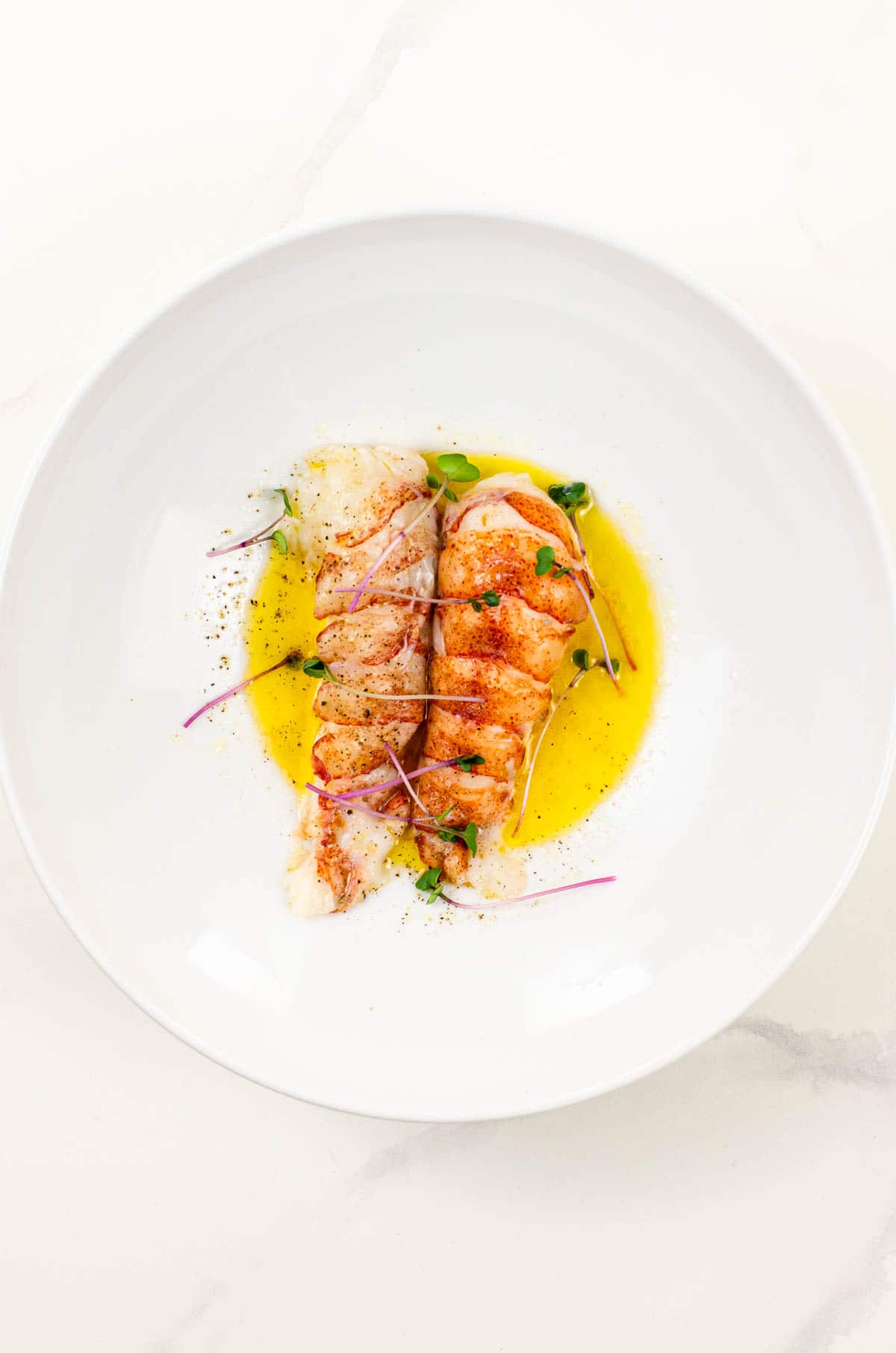
Hungry for more?
Subscribe to Umami Girl's email updates, and follow along on Instagram.

Sous Vide Lobster Tail Recipe
Ingredients
- 8 4- ounce cold-water lobster tails
- 8 tablespoons cultured (salted butter)
- Lemon wedges (for serving)
Instructions
- Remove the tails from their shells: Use kitchen shears to cut all the way down the underside of the shell and then pry the shell open like a book. Wiggle your thumb between the meat and the top of the shell and remove the meat in one piece by gently but firmly prying it out of the open shell. If you see a "vein" (actually the digestive tract) running down the center of the tail, cut a slit into the underside of the tail and remove the vein.
- Place the tails and the butter into a gallon-size zip-top freezer bag. Squeeze out some of the air and partially seal the bag.
- Fill a deep pot or food storage container halfway with water.
- Submerge the partially sealed bag into the water so that all ingredients are covered with water but no water gets into the bag. Now you'll perform the water displacement method of sealing the bag. Use one hand to help squeeze air out of the bag (the water itself does the heavy lifting here, but you'll help it out) and the other hand to finish sealing the bag's zip top. Remove bag from water and set aside.
- Clamp your sous-vide cooker to the side of the pot and set the temperature to 135°F and the timer for 45 minutes.
- When water is preheated, carefully place the sealed bag back into the water. Cook for 45 minutes.
- When timer sounds, remove bag from water. Tender, buttery lobster is ready to serve.
Notes
- Cold-water lobster tails have better flavor and texture. See the detailed section in the post above to learn more. You can use any size tails, but since smaller ones are usually more affordable and it's easy to serve multiples, I like to use smaller ones in this recipe.
- Fresh seafood is ideal when you can get it, but it's perfectly fine to buy flash-frozen cold water tails, too. As long as they're defrosted properly, they'll retain the vast majority of their excellent taste and texture. Previously frozen tails at a good grocer or fish market will have been defrosted properly, or you can buy them still frozen and defrost in the refrigerator overnight.
- Use a really good cultured, salted butter from grass-fed cows for best results. This sounds fancy but absolutely doesn't have to be. I buy Kerrygold butter from the supermarket. It's reasonably priced and excellent quality.
- Lobster is so special on its own that it really doesn't need any additional flavors to shine. That said, here are a few additions you can make to gently jazz things up if you like. Add ingredients directly to the bag before sealing. A few sprigs of fresh basil, chervil, chive, cilantro, parsley, scallion, sorrel, or tarragon // ¼ cup shaved fennel or 1 teaspoon dried fennel seed // A pinch of saffron threads and a pinch of vanilla seed // Half of a very thinly sliced small shallot (or 2 tablespoons minced) // Two crushed garlic cloves // Two strips of lemon zest removed from a lemon with a vegetable peeler
- To serve, I like to spoon some of the buttery sauce into a wide, shallow bowl, set the tails on top, and serve with lots of lemon wedges to squeeze. A little sprinkle of truffle salt makes a beautiful addition, and the tails are pictured here garnished with a sprinkle of radish microgreens.
- You can cook the lobster in advance. Immediately after cooking, place the bag into a large bowl of ice water to chill completely, then transfer to the refrigerator. Keep refrigerated for up to four days. Just before serving, reheat in 120°F water until warm. The same applies to leftovers. Freshly cooked tails will keep up to four days tightly sealed in the fridge.
- If you have leftover sauce after finishing all the tails, store it tightly sealed in the fridge for up to a few days and toss with pasta or rice.
Nutrition
Hungry for more?
Subscribe to Umami Girl's email updates, and follow along on Instagram.






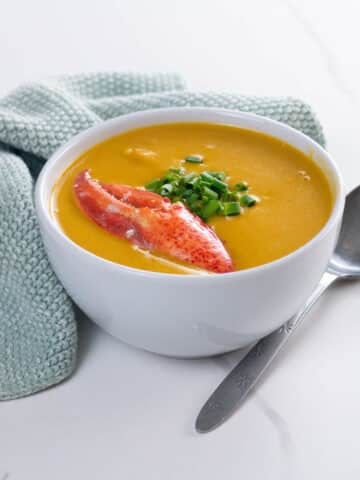
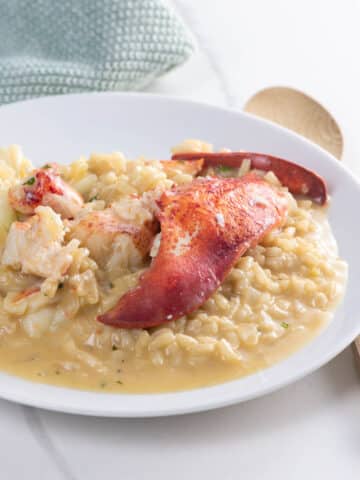
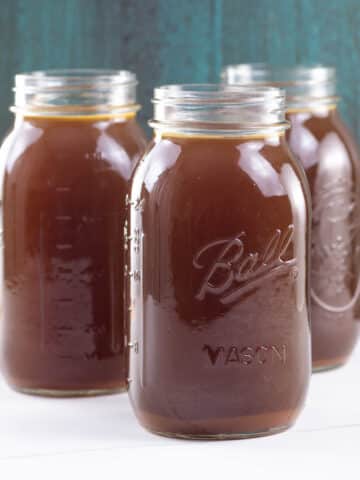
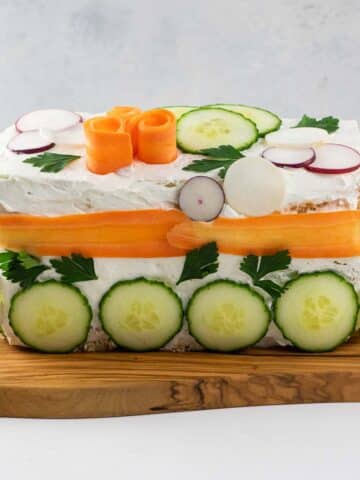

Leave a Reply